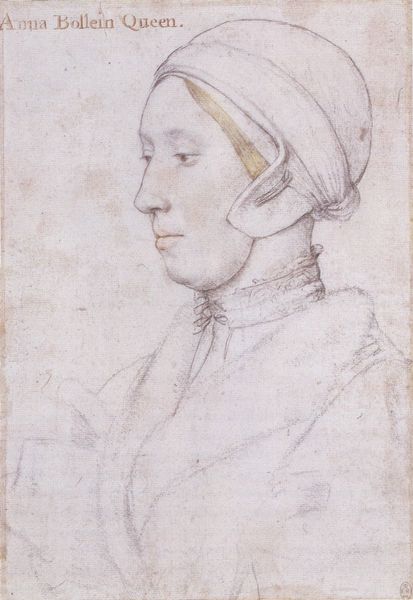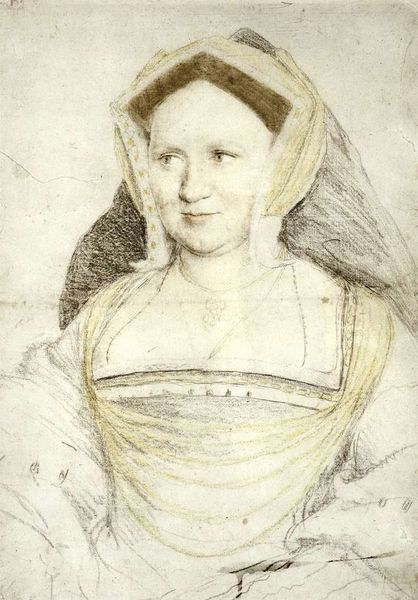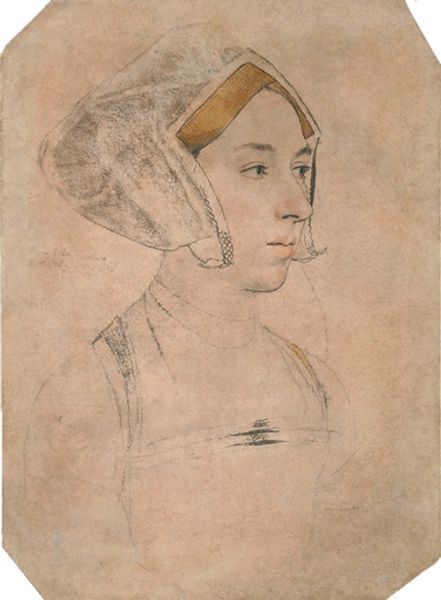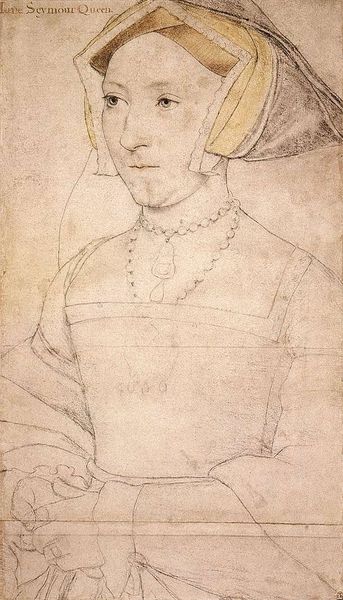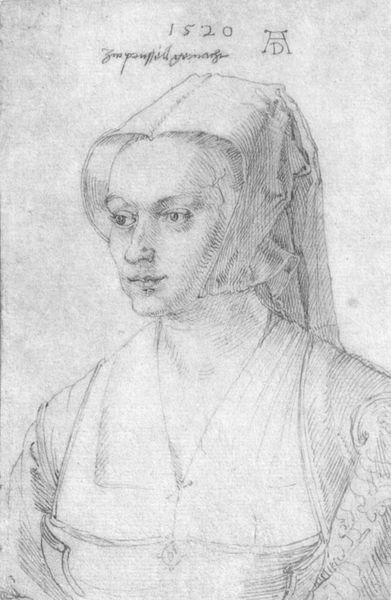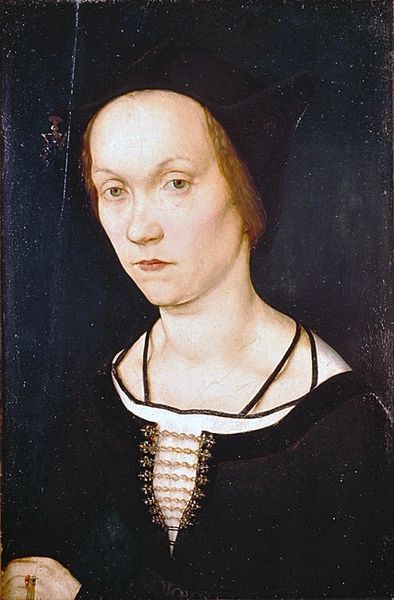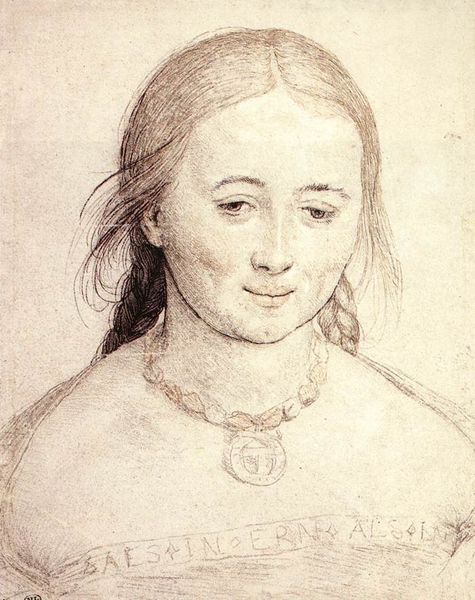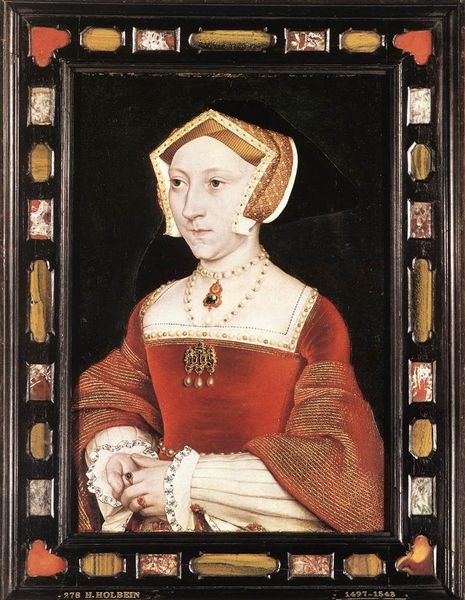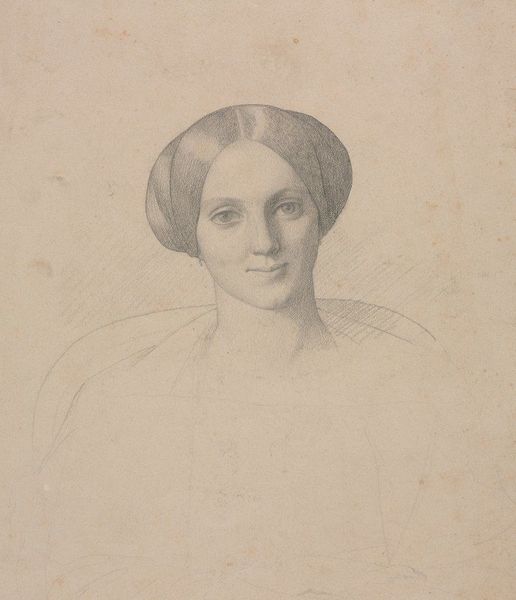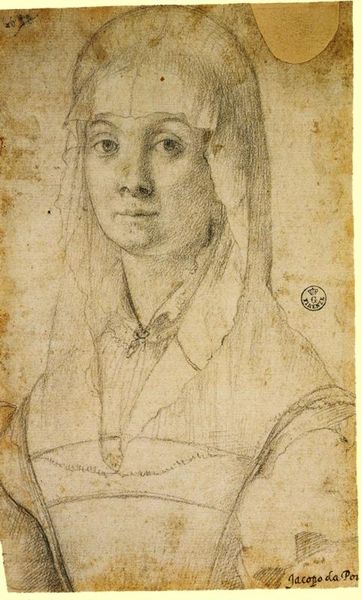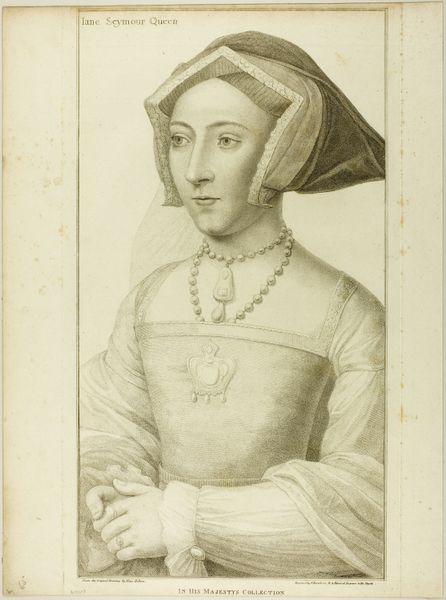
drawing, coloured-pencil, paper, charcoal
#
portrait
#
drawing
#
coloured-pencil
#
charcoal drawing
#
paper
#
11_renaissance
#
coloured pencil
#
portrait drawing
#
watercolour illustration
#
charcoal
#
northern-renaissance
#
lady
Dimensions: 28 x 21 cm
Copyright: Public domain
Editor: This is Hans Holbein the Younger's "Lady Elyot," a drawing from 1533 using charcoal and coloured pencil on paper. It’s quite striking how modern it feels despite being almost 500 years old. What do you make of its impact? Curator: It's intriguing how Holbein uses such seemingly simple materials to convey so much about Lady Elyot’s status and place in Tudor society. Consider the controlled lines and precise details of her headdress. What does that meticulous rendering suggest to you? Editor: It feels…calculated, almost. Like she’s very aware of how she's presenting herself. Curator: Precisely. This drawing functions as both a likeness and a carefully constructed image. Portraiture during the Tudor era served a significant purpose. It communicated power, wealth, and lineage, reinforcing the social hierarchy. This wasn't simply about capturing someone's appearance. Editor: So, Holbein isn't just showing us what Lady Elyot looked like, but also telling us something about her role? Curator: Absolutely. The very act of commissioning a portrait, especially from a sought-after artist like Holbein, signifies Lady Elyot’s elevated position. We see here how art actively participated in shaping social perceptions and solidifying power structures. Look at the subtle hints of color – are they about realism, or something more? Editor: Hmm, the touches of yellow and the blue seem almost symbolic, rather than purely representational. It brings an extra layer of intention to it all. Curator: Precisely! It highlights how deeply interwoven art and power were at this time. Editor: This has definitely given me a new perspective on Renaissance portraits; it’s fascinating to see art as such an active agent in society! Curator: Indeed. Holbein's drawing is a great example of how we can read art as a historical text, revealing the intricate connections between individuals, institutions, and the politics of image-making.
Comments
No comments
Be the first to comment and join the conversation on the ultimate creative platform.

